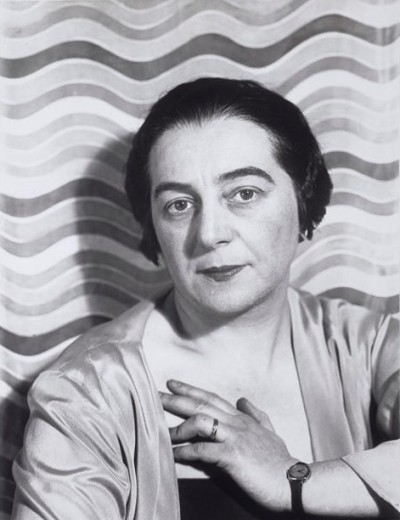
Sonia Delaunay
About
She was born Sonia Terk, in Odessa, Russia in 1884. Sonia was brought up in St. Petersburg, where she studied painting. In 1905, she moved to Paris to further her studies and married the artist Robert Delaunay in 1909. Her husband was hot-tempered and financially irresponsible, and for nearly 30 years Sonia propped him up till he died in 1938.
They were living in Madrid when the Russian revolution took place, and her rich St. Petersberg relatives stopped supporting her. Diaghilev happened to be in Madrid looking for a set designer for his ballet "Cleopatre" and Sonia found her true calling when she designed it for him. Her vibrant geometrics and glowing concentric circles later adorned vases, hatboxes, fabrics and even a car.
She painted bold, abstract canvases dominated by curves, triangles and squares. In 1925, she worked with the textile company Bianchini-Ferier and created printed geometric designs in contrasting colours. In the same year, she produced patchwork designs which were made into coats by Jacques Heim.
Her influence can be noted in the work of Jean Patou, Elsa Schiaparelli and other designers of the 20's and 30's. She used brilliantly coloured and sharply patterned geometric designs on the 'simultaneous' coat worn by Gloria Swanson in 1923.
She died in Paris in 1979 at the age of 93 years.
The Look
Her type of art was called Orphism, a movement which developed out of Cubism and which made colour the primary means of artistic expression. Her fashions had their origins in paintings of the 19th century artist Michel-Eugene Chevrul. She moulded the fabric to the shape of the garment to ensure that the application of the colours remained intact. Her new concept of fabric pattern, whereby the cut and decoration of the garment were created at the same time, perfectly complemented the unstructured clothes of the 20's.